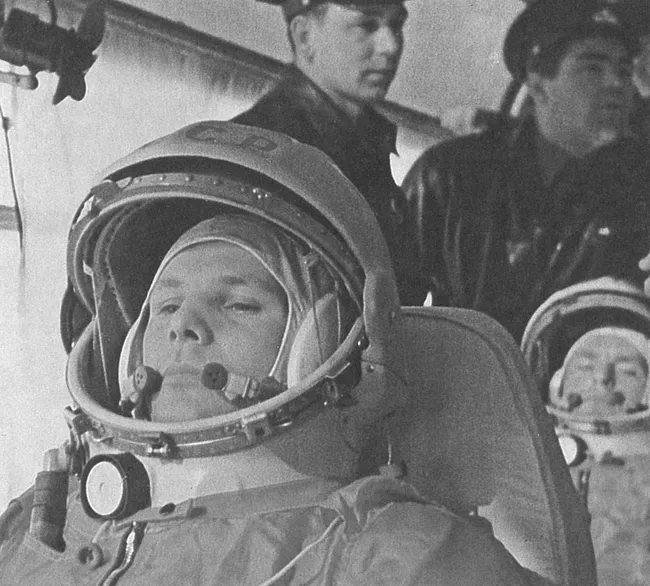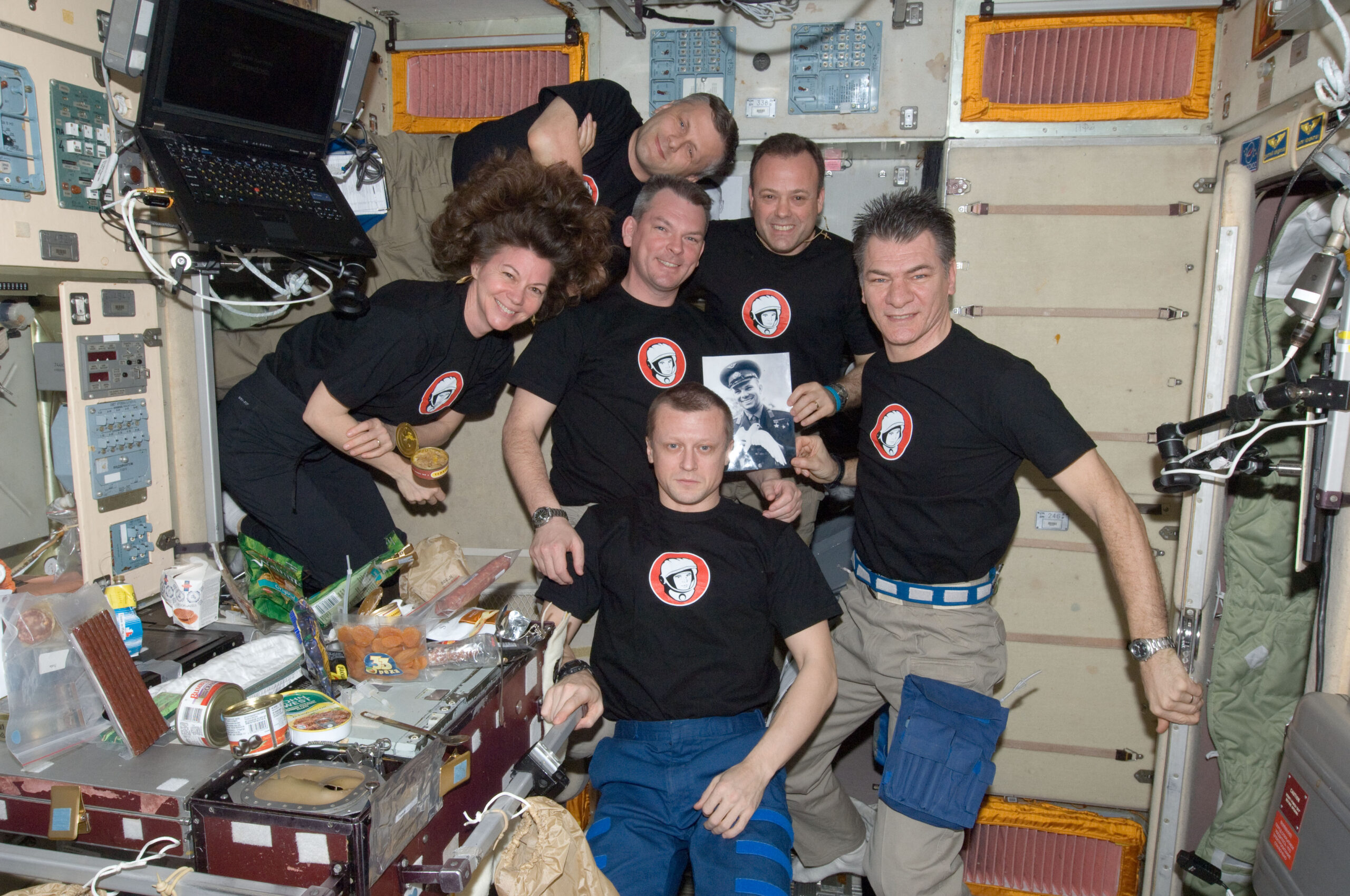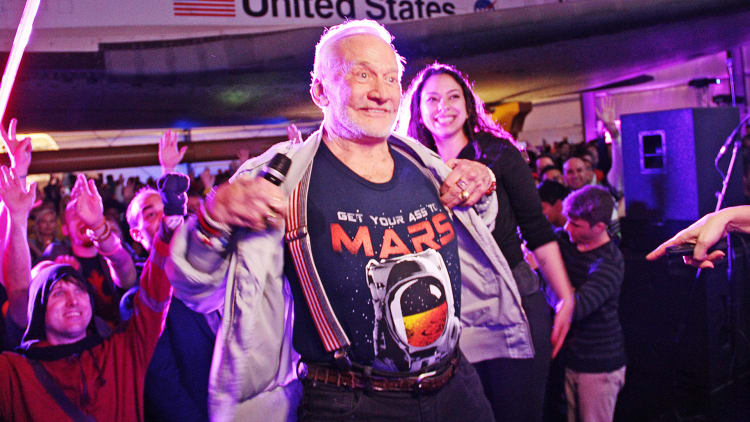WASHINGTON — Joseph Cox was sporting a black tuxedo, sparkling silver sneakers and purple sunglasses, as he waited in a long, snaking line here to catch a glimpse of a Simon Birch installation at the National Air and Space Museum: a replica of the iconic white bedroom in Stanley Kubrick’s “2001: A Space Odyssey.”
What did he think that hotly debated scene conveyed? “Being reborn,” he said.
Rebirth could also refer to the museum itself. Just last week, it announced that Dr. Ellen Stofan, the former chief scientist at NASA, would be taking over as the director of the museum, which, with 7 million visitors last year, is the most popular of the Smithsonian institutions. The museum is about to begin an ambitious seven-year, almost $1 billion renovation at a time when space exploration is receiving renewed interest.
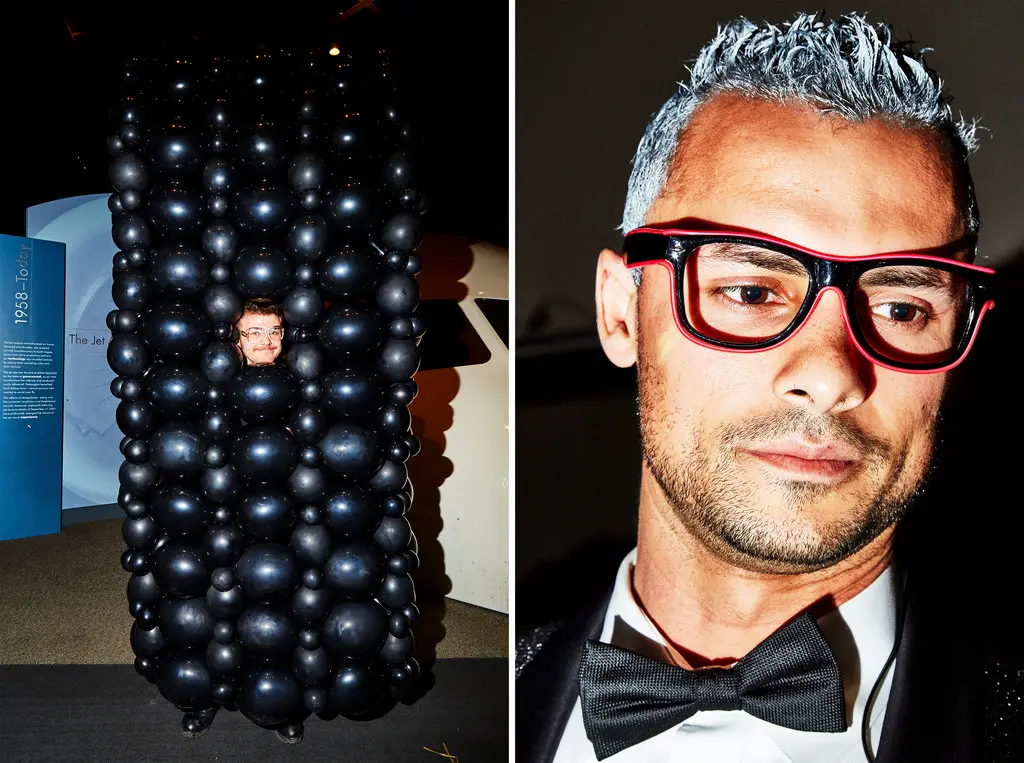
“The goal here is really about, how do we get people that aren’t interested in space to be interested in space and be interested in the museum?” said Mark Kornmann, an associate director.
To attract a younger generation, the Smithsonian threw open its doors on Saturday night to celebrate the Russian cosmonaut Yuri Gagarin, who on April 12, 1961, became the first human to venture into space, a victory for the Soviet Union at the time. Yuri’s Night, as the yearly celebration of space is known, is held all over the world, but this particular gathering, which sold 2,000 tickets, was believed to be among the year’s largest.
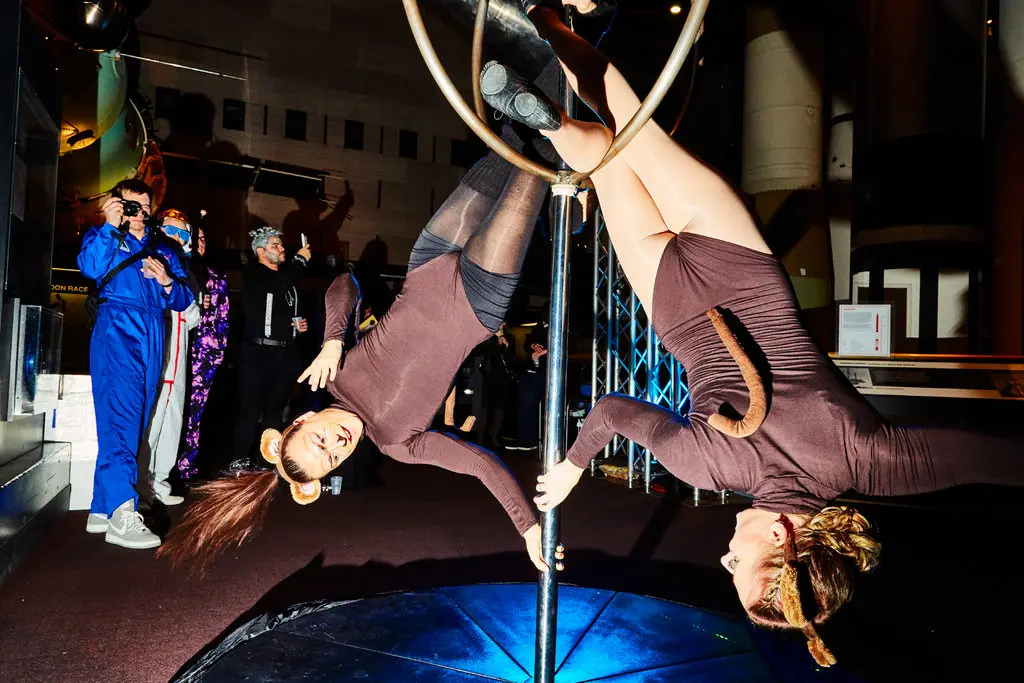
It was surely an unusual sight for a building featuring life-size replicas of shuttles, capsules and planes. A silent disco in the “Moving Beyond Earth” gallery. Ten open bars strewn over two floors. Space-themed costumes and dancing inches away from exhibits — picture a Halloween weekend fraternity party.
The event also paid tribute to Kubrick’s science fiction odyssey, which had its premiere 50 years ago at this city’s Uptown Theater, with the exhibit from Mr. Birch, a Hong Kong-based multimedia artist.
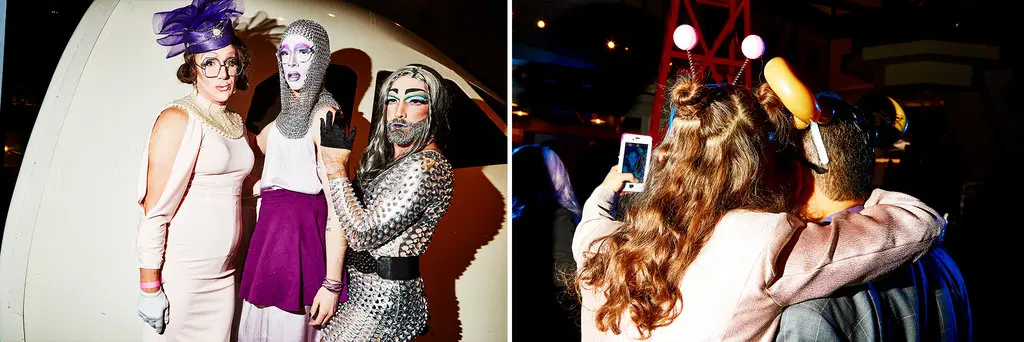
Recently, chatter of sending humans to Mars has captured imaginations, recalling the Apollo missions of the 1960s. The solar eclipse last year, for one day, made space the topic du jour, especially after images of President Trump peering into the sky without sunglasses went viral. Private and commercial efforts have helped too, including Elon Musk’s launch of the SpaceX-built Falcon Heavy rocket, which carried an electric sports car with a mannequin driver in February. Even the National Aeronautics and Space Administration, often targeted for cuts, saw a $1.1 billion increase in funding in the recently signed budget bill.
Among the partygoers on Saturday was Kevin Doherty, a Washington-based mathematician in a blue spacesuit.

“I think space is the next frontier of our civilization,” he said. Next to him was Nate Dreyfuss, who, wearing a purple blazer and slacks, called himself a “space lawyer.” The two watched acrobats in black body suits and ape ears — a nod to Kubrick’s film — swivel on a display in front of a re-creation of the 1975 Apollo-Soyuz joint mission.
Mr. Doherty and Mr. Dreyfuss engaged in a civil but spirited debate over the meaning of the scene depicted by Mr. Birch. Mr. Dreyfuss said it was an “echo of the beginning,” referring to the movie’s opening, when apes begin to evolve. Mr. Doherty disagreed, saying it was the “echo of a generation following a generation.”
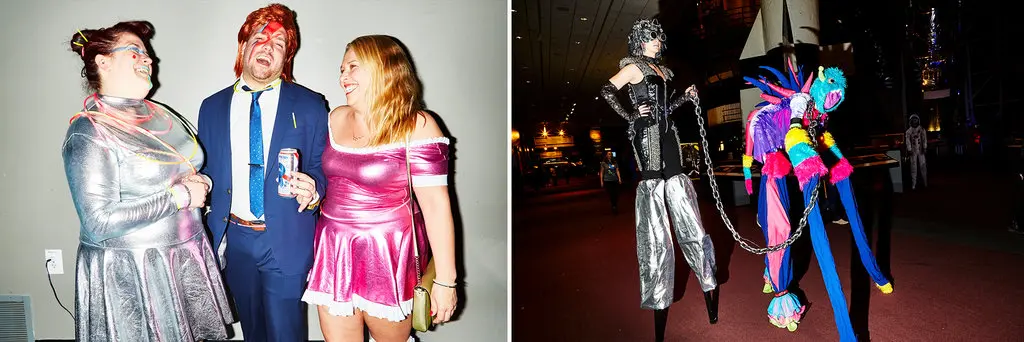
Nearby, Adam Wannamaker, who came down from Brooklyn, created one of the bigger spectacles during an evening full of them. He was dressed in a costume made entirely of 300 balloons — a representation of the monolith that appeared to set the events of Kubrick’s movie in motion.
“Once you start looking for anything existential and you start wondering about your own existence, you realize that it’s all pointless,” Mr. Wannamaker said. At one point, a security guard appeared from behind the costume to awkwardly double check whether there was indeed a human inside. A few seconds later, a woman approached Mr. Wannamaker and yelped, “Oh, I get it! The monolith!”
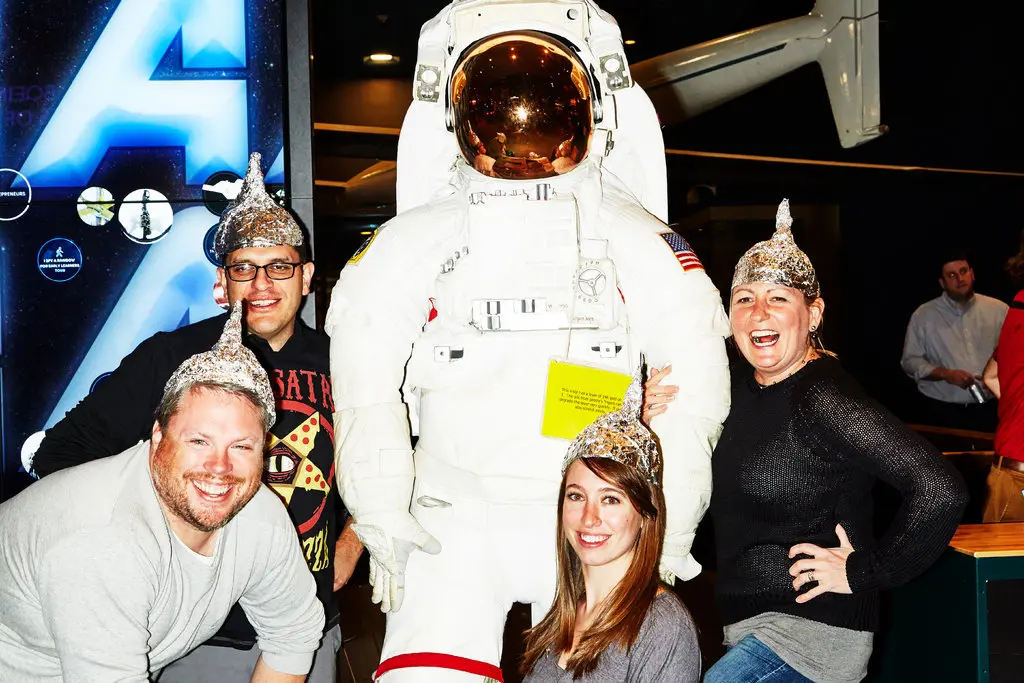
The costumes were as varied as they were numerous. And if you didn’t have one, the party was there to help, with a station that made tinfoil hats — a tongue-in-cheek acknowledgment of how space fans have traditionally been viewed. There were Star Trek shirts, lab coats, moon pajamas. Some people wore professional wrestling championship belts. (The wrestler Ric Flair’s theme song was from the Kubrick film.)
“It’s a celebration of science fiction and being able to be around like-minded people,” Mr. Wannamaker said.
It was perhaps not a coincidence that many of the people actually taking in the exhibits weren’t in costume, like David Hand, who said he’s been coming to the museum for 40 years. He said that even if people were coming just for the party, there was still a tangential effect of having them just in the building.
“You’re going to see this,” Mr. Hand, a 47-year-old pharmacist, said, pointing to an exhibit of artifacts from the Apollo missions. “You’ve got an engine from Saturn V. We went to the moon. People see that and all these other artifacts. It’s inspirational.”
But perhaps this wasn’t the night to educate. A late-night talk on Kubrick’s work in the Lockheed Martin Imax Theater between Glen Weldon, an author and an NPR contributor, and Chris Klimek, an editor at Air and Space Magazine, went sparsely attended.
Everyone else was partying.
Read the original article on The New York Times: here


